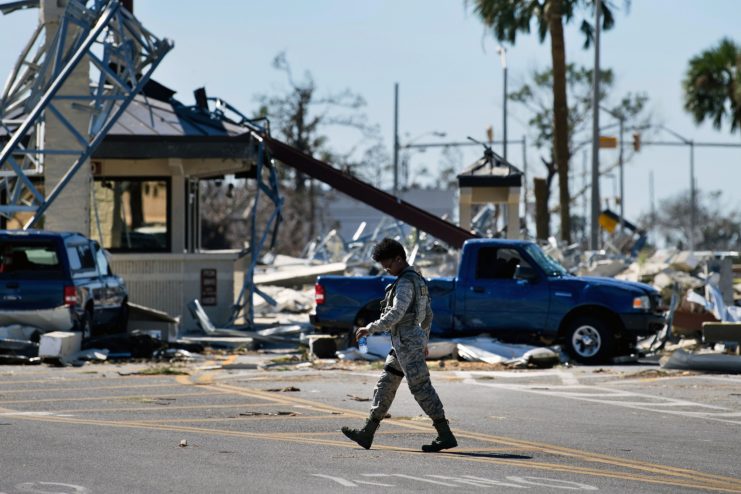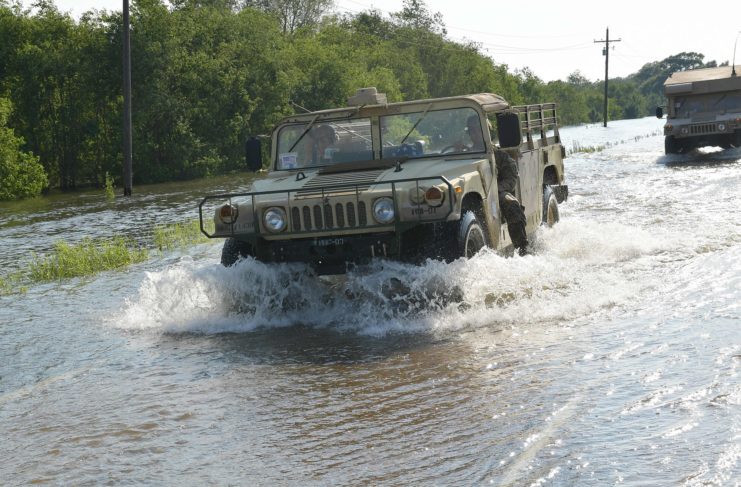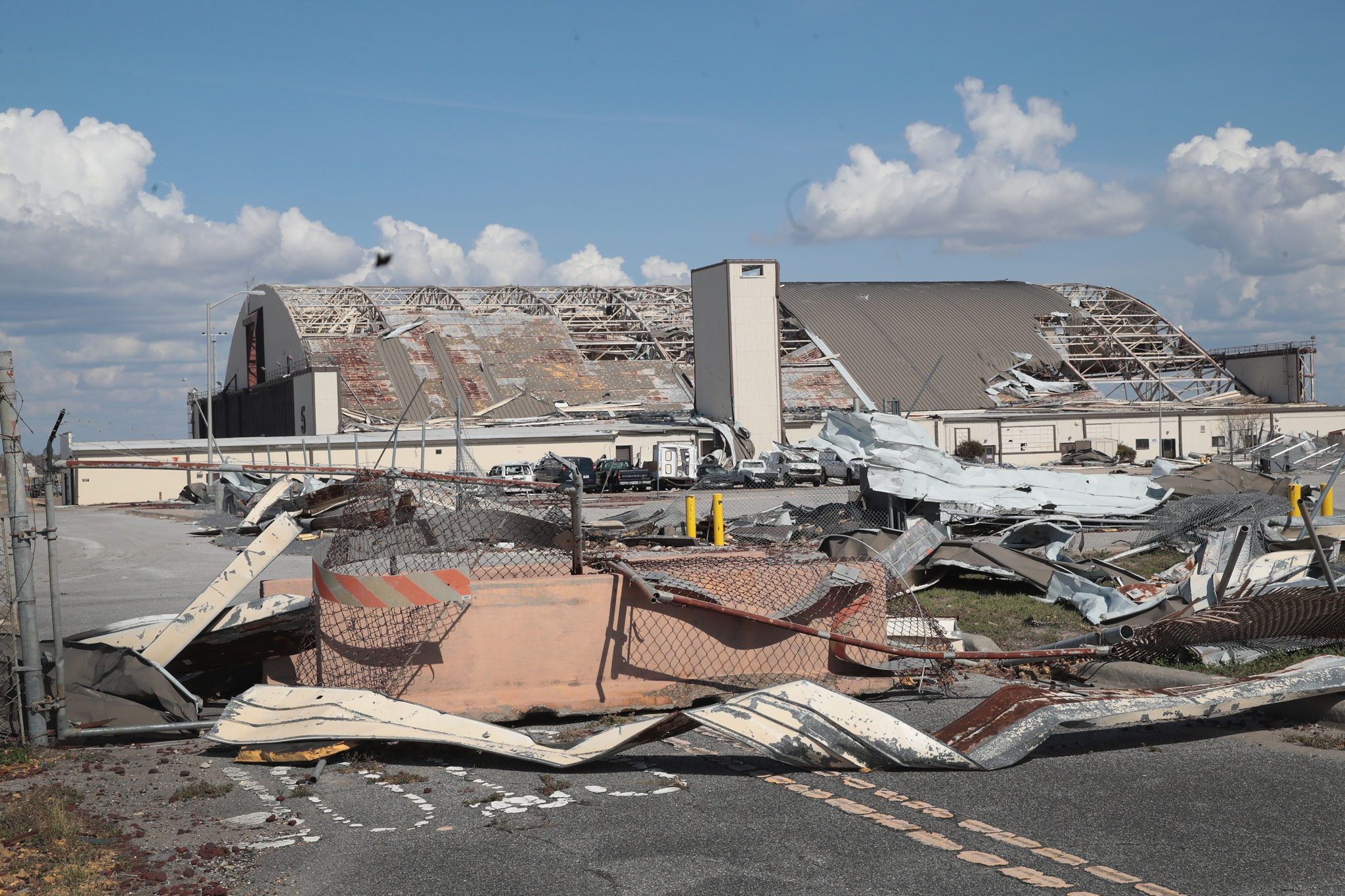As the US still deals with the effects of Hurricane Micheal and Hurricane Florence that struck the nation in 2018, efforts are being made to improve the US military’s resistance to climate change. Storms and other natural disasters are being amplified by climate change, an ever-increasing problem that is costing the US an enormous amount of money to deal with. Facing growing costs to repair and reinforce military bases and facilities around the country, the Department of Defense (DoD) is taking a much more serious approach to the issue.
Climate change and the US military

In August and September of 2018, Hurricane Florence, a Category 1 hurricane, swept over much of the US east coast, pouring up to three feet of water in some areas. The location that was hit the worst was North Carolina, which is the home of Marine Corps Base Camp Lejeune.
Florence hit the base hard, dumping huge amounts of water while moving along slowly, tearing the roofs off hundreds of buildings. The storm lingered overhead for three days, continuing to pour water onto the base in record quantities. Enormous floods covered the base and entered buildings, resulting in widespread destruction.
The buildings least affected by the storm were those built in recent years, as they are constructed from more durable materials. Meanwhile, buildings erected in the 1940s and 1950s offered little resistance to the storm.
“Hurricane Florence, I like to say, exposed the soft underbelly of our infrastructure here,” said Navy Captain Miguel Dieguez, the camp’s facilities director.
“The oldest and kind of most vulnerable part of our infrastructure that dates back to the 40s and 50s was really susceptible to the winds and the rain that happened,” he said.
The damage at Camp Jejeune is costing the US military around $4 billion.
Just a month after Hurricane Florence, Hurricane Micheal left a wake of destruction up through Florida and again along the east coast of the US. Yet another US military base, Tyndall Air Force Base, was caught in the storm, leading to extensive damage.
The base was described as “unlivable” after Hurricane Michael obliterated large amounts of the installation. Much of Tyndall Air Force Base’s buildings and facilities were destroyed, as well as a number of aircraft. 17 F-22 Raptors were at the base during the storm, many of which were damaged. Fortunately, the Air Force managed to transport 33 F-22s from the base to Wright-Patterson Air Force Base in Ohio before the storm arrived.
The estimated cost of the damage at Tyndall Air Force Base is just under $5 billion.
Just a few months later in March 2019, the Offutt Air Force Base in Nebraska was severely flooded by the Missouri River. The cost of the damage is estimated to be around half a billion dollars and is expected to take years to repair.
The costs of climate change

Storm-battered Texans faced a worrying new threat Thursday as potentially harmful smoke spewed from a swamped chemical plant near Houston, as Harvey’s floodwaters began to recede in America’s fourth-largest city. (Photo Credit: MANDEL NGAN/AFP via Getty Images)
Climate change doesn’t end with the partial destruction of a number of US military facilities. The military must cover the cost to repair damage caused by climate change, but the costs have to be cut somewhere else. This can have a trickle-down effect where military installations are deprived of financial resources because of an incident that occurred on the other side of the country.
Not only this, but climate change can have a direct impact on the US armed forces by quite literally preventing operations or damaging critically needed equipment in the field.
“Increasingly, extreme weather is imposing a cost on DOD bases, not only in dollars but in readiness. It is impacting missions and operations,” says John Conger, who worked for the Department of Defense (DoD) during the Obama Administration and is currently the director of the Center for Climate and Security.
More From Us: “Secret” Military Bases Hiding In Plain Sight
The costs already caused by storms and extreme weather in recent years have prompted the DoD to investigate and assess climate change risks facing facilities all over the US. The bases that have been affected and require extensive repairs will have improved measures to better resist storms, heatwaves, droughts, and rising sea levels.
Currently, coastal military installations have been identified as at the most risk, as they are the most exposed to rising sea levels and powerful storms exacerbated by climate change.
